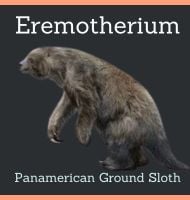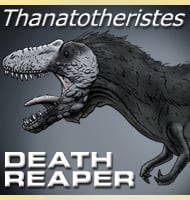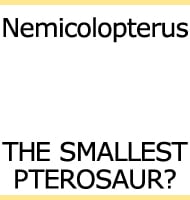In Depth
Like with many dinosaurs, the remains of Elaltitan were originally described as belonging to another genus. Originally assigned by Bonarparte and Gasparini to Antarctosaurus in 1979, the remains were later described as Argyrosaurus by Jaime Powell. Later study of the remains by Philip Mannion and Alejandro Otero led to several key differences being noted, particularly the neural arches of the vertebrae. This led to the conclusion that the remains were those of a very distinct genus of titanosaurian sauropod dinosaur. This led to the creation of Elaltitan, a combination of the name of the god for a local people combined with the ancient Greek titan, from a race of giants that once ruled the world before they were overthrown by the Olympian gods. In fact the term ‘titan’ has been used as the basis for a lot of sauropod dinosaur remains because of their large physical sizes. The species name E. lilloi is in recognition of the work of Miguel Lillo. Elaltitan is yet another sauropod dinosaur known from the Cretaceous era deposits of South America. During the Cretaceous, sauropods, particularly titanosaurian ones, were still roaming across the globe, though in most places it seems that they were in far fewer numbers to what they had been back at the end of the Jurassic when the number of known remains are most numerous. South America however seems to have been a refuge for these giant dinosaurs that not only allowed them to hang on but also to thrive with such truly gigantic forms such as Argentinosaurus. This may have been down to South Americas increasing isolation from the rest of the world as the continents continued to drift apart, something that would limit the influx of new creatures into South America, but would also stop sauropods expanding back out.
Like with most other sauropods, the best defence that Elaltitan would have had against predators would have been its large size, although it is still unknown if Elaltitan had bony armour similar to some other titanosaurs such as Saltasaurus. Because the remains of Elaltitan are incomplete it is hard to be certain as to exactly how big it was. However, although Elaltitan is seen as different from Antarctosaurus, the femur of Elaltitan seems to have been roughly the same size as the femur of Antarctosaurus. If the rest of the missing skeleton of Elaltitan was scaled the same as Antarctosaurus, then its plausible that Elaltitan may have been of similar overall size, roughly some eighteen metres long. It should be remembered however that big animals will always be at risk from big predators, and Elaltitan, particularly smaller juveniles, may have been at risk of attack from large theropod dinosaurs such as Giganotosaurus and Mapusaurus.
Further Reading
– A reappraisal of the Late Cretaceous Argentinean sauropod dinosaur Argyrosaurus superbus, with a description of a new titanosaur genus. – Journal of Vertebrate Paleontology 32(3):614-638. – P. D. Mannion & A. Otero – 2012. – Rates of Dinosaur Body Mass Evolution Indicate 170 Million Years of Sustained Ecological Innovation on the Avian Stem Lineage. – PLoS Biology. 12 (5). – R. B. J. Benson, N. S. E. Campione, M. T. Carrano, P. D. Mannion, C. Sullivan, P. Upchurch & D. C. Evans – 2014. – Cope’s rule and the adaptive landscape of dinosaur body size evolution. – Palaeontology. 61 (1): 13–48. – R. B. J. Benson, G. Hunt, M. T. Carrano, N. Campione & P. Mannion – 2018. – Dinosaur Facts and Figures: The Sauropods and Other Sauropodomorphs. – New Jersey: Princeton University Press. p. 266. – Molina-Perez & Larramendi – 2020.









